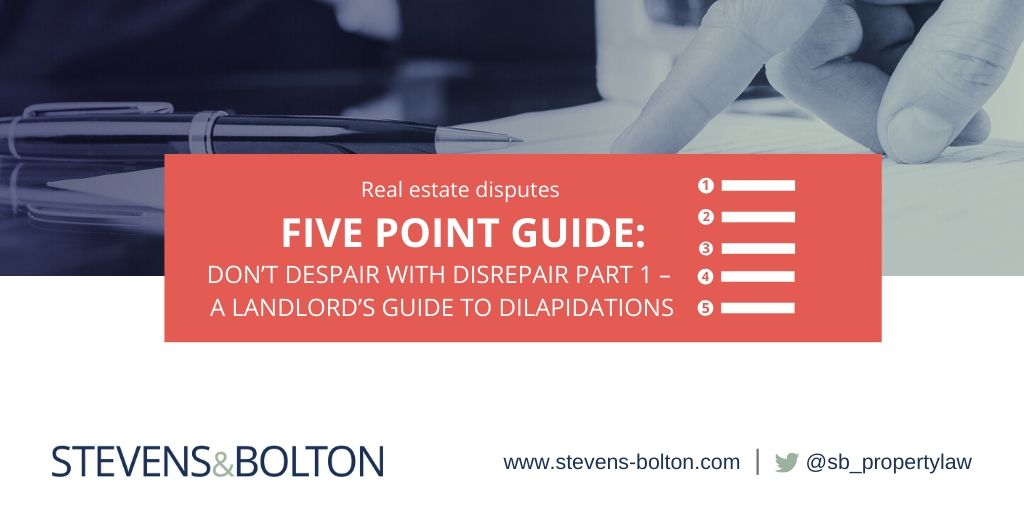When a property is left in disrepair by its tenant on lease expiry a landlord expects to recover the cost of making good. Meanwhile, the tenant expects to move on without further liability. Such disparate expectations can lead to lengthy and costly disputes.
Part 1 of this guide to dilapidations will look at the steps you, as a landlord, should consider to maximise your chances for quick early settlement.
1. Get in there (if you can)
Most commercial leases reserve a right for a landlord to access the premises at any time on reasonable notice for the purpose of inspecting their state and condition. So, instructing a specialist building surveyor to inspect at least 12 months before lease expiry will help to unveil the scale of any dilapidations and give you plenty of time to formulate a strategy.
2. Get to grips
You should consider instructing a specialist solicitor familiar with dilapidations claims to help you understand the tenant’s liability and your options. Depending on the lease, there may be tactics which could deploy to improve your chances of recovery. Also, speaking to your tenant early on to understand its ability/intention to carry out works will help guide your approach.
3. Get a schedule
Your building surveyor will compile a schedule setting out the breaches and works which are needed to address them. Serving an interim schedule via your solicitor before the lease ends may help to focus the tenant’s mind, set expectations, and possibly even encourage it to stay. The cost of preparing and serving the schedule may be recoverable from the tenant too.
4. Get it agreed
With good advice and preparation you can agree dilapidations in advance of the lease ending, or shortly afterwards. However, if there is a risk of a dispute it is important to be ready to support your claim with a terminal schedule of dilapidations on expiry to evidence the state and condition. This should be served by your solicitor with a view to parties’ surveyors meeting to try and agree the claim. It is important to understand however that your claim for disrepair is capped by statute and, depending on the circumstances, may even be nil. Any settlement should be documented by your solicitor to ensure your rights are properly protected. Of course, where the case merits litigation even initially, your solicitor can advise you on the merits of taking action.
5. Get going with the works
Where settlement isn’t reached you may need to undertake the repair works yourself to substantiate your claim. The cost of the remedial works will be the starting point for proving a loss. However, beware that any works which supersede what the tenant is liable for will not be recoverable. Also, you will not be able to prove a loss if you re-let immediately at market rent without carrying out the works.
Dilapidations is a complicated area of law and you should always seek specialist advice. If you would like further information, please contact a member of the real estate disputes team at Stevens & Bolton.

 Markus Klempa
Markus Klempa